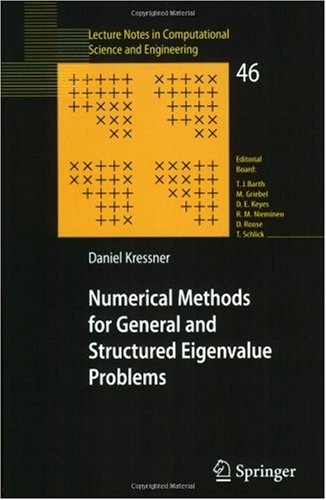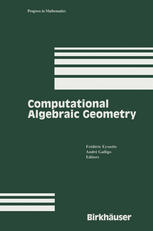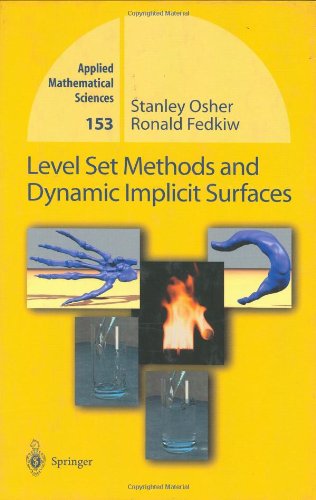Daniel Kressner (auth.)9783540245469, 9783540285021, 3540245464
The purpose of this book is to describe recent developments in solving eig- value problems, in particular with respect to the QR and QZ algorithms as well as structured matrices. Outline Mathematically speaking, the eigenvalues of a square matrix A are the roots of its characteristic polynomial det(A??I). An invariant subspace is a linear subspace that stays invariant under the action of A. In realistic applications, it usually takes a long process of simpli?cations, linearizations and discreti- tions before one comes up with the problem of computing the eigenvalues of a matrix. In some cases, the eigenvalues have an intrinsic meaning, e.g., for the expected long-time behavior of a dynamical system; in others they are just meaningless intermediate values of a computational method. The same applies to invariant subspaces, which for example can describe sets of initial states for which a dynamical system produces exponentially decaying states. Computing eigenvalues has a long history, dating back to at least 1846 when Jacobi [172] wrote his famous paper on solving symmetric eigenvalue problems. Detailed historical accounts of this subject can be found in two papers by Golub and van der Vorst [140, 327]. |
Table of contents :
The QR Algorithm….Pages 1-66
The QZ Algorithm….Pages 67-111
The Krylov-Schur Algorithm….Pages 113-130
Structured Eigenvalue Problems….Pages 131-214
Background in Control Theory Structured Eigenvalue Problems….Pages 215-223
Software….Pages 225-231 |







Reviews
There are no reviews yet.